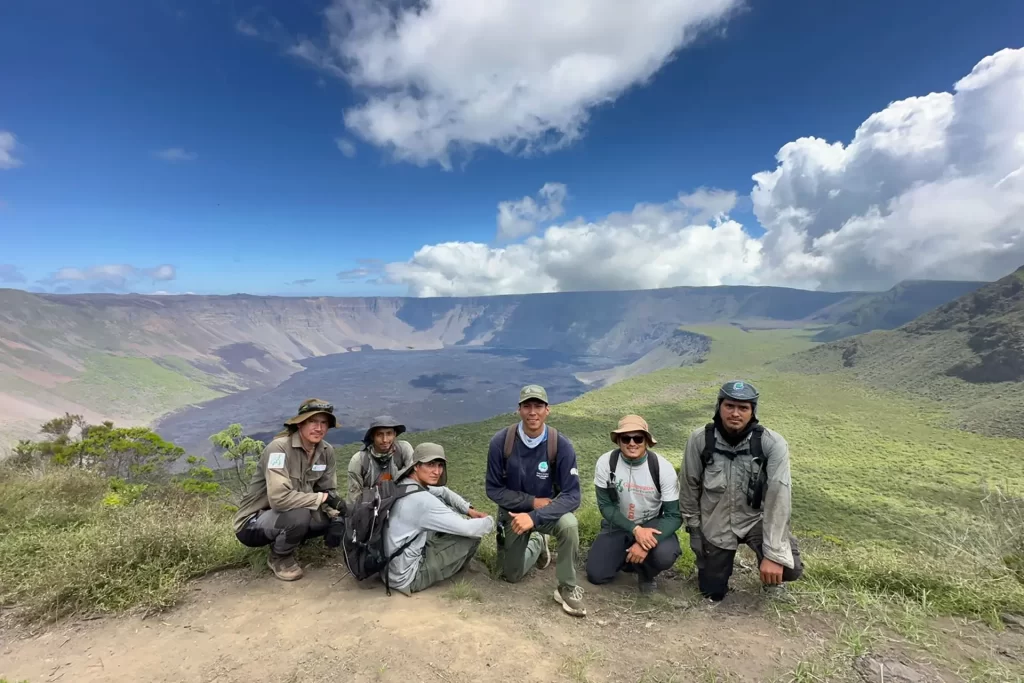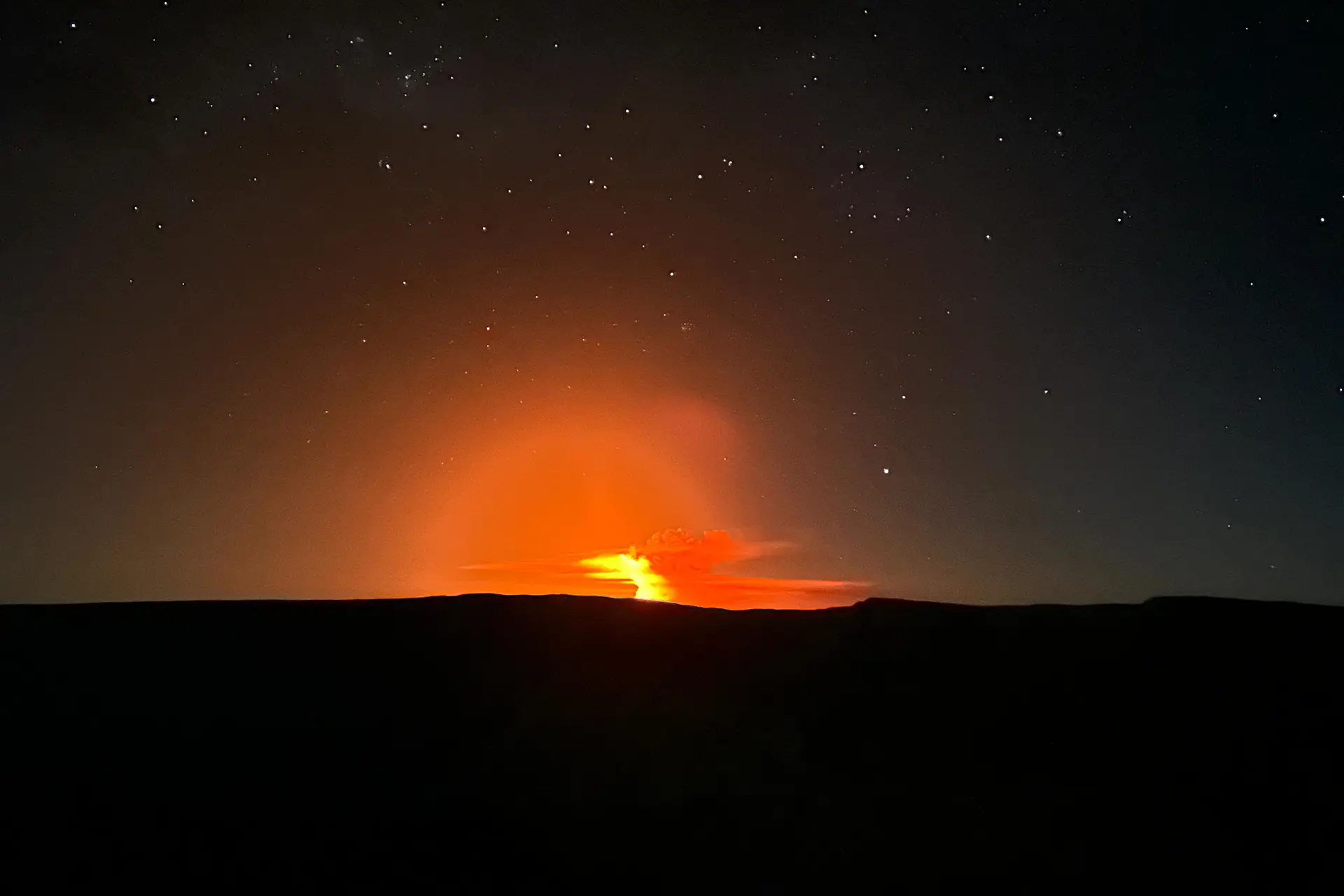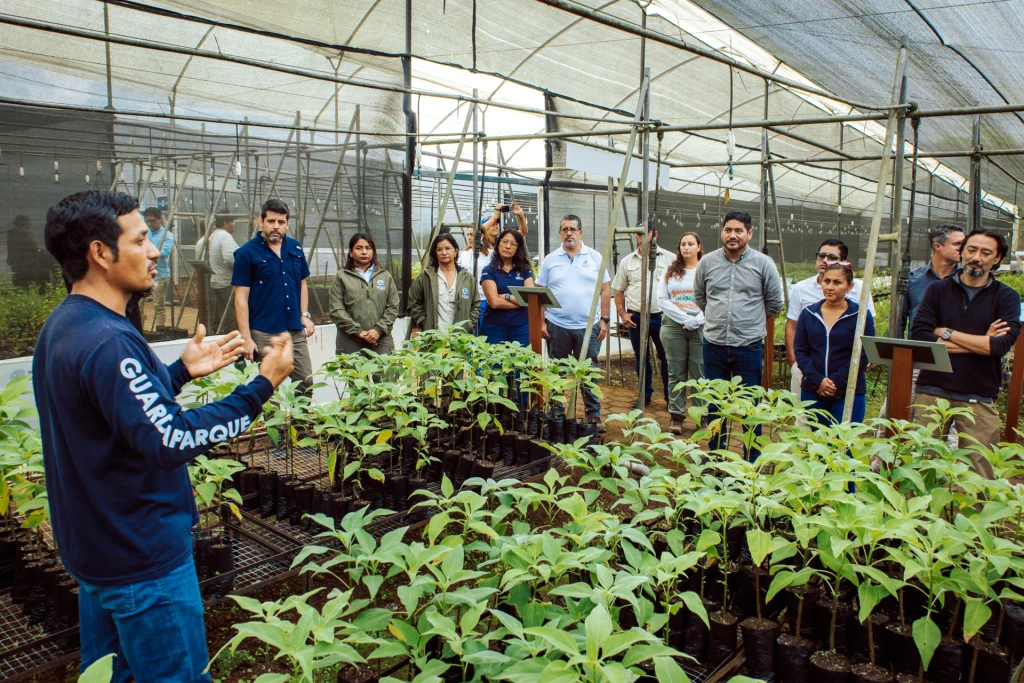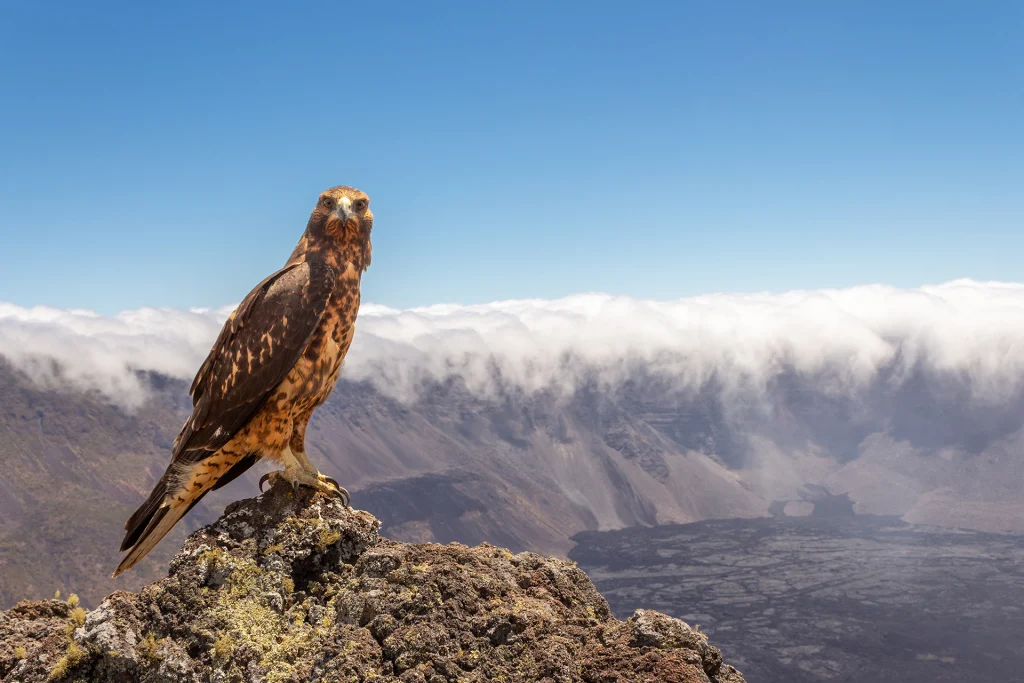Few people are lucky enough to see a volcano erupt. For the second time within two years, Dr. Jorge Carrion, Director of Conservation for Galapagos Conservancy has witnessed first-hand the fury and majesty of vulcanism in these remote Galapagos Islands.
Conserving endangered wildlife among volcanic eruptions
Jorge led a conservation mission on Wolf Volcano in January 2022 on Isabela Island. The goal was to protect and study the endemic pink iguana that lives on Isabela Island. Jorge, along with other conservation officers and park rangers of the Galapagos National Park Directorate were searching for iguanas at the edge of the crater when the volcano erupted. The team was fortunate to be located on the other side of the crater from where the eruption took place. They were able to quickly evacuate thanks to the logistic support provided by the National Park, as well as the cooperation of the yacht, “Octopus.”
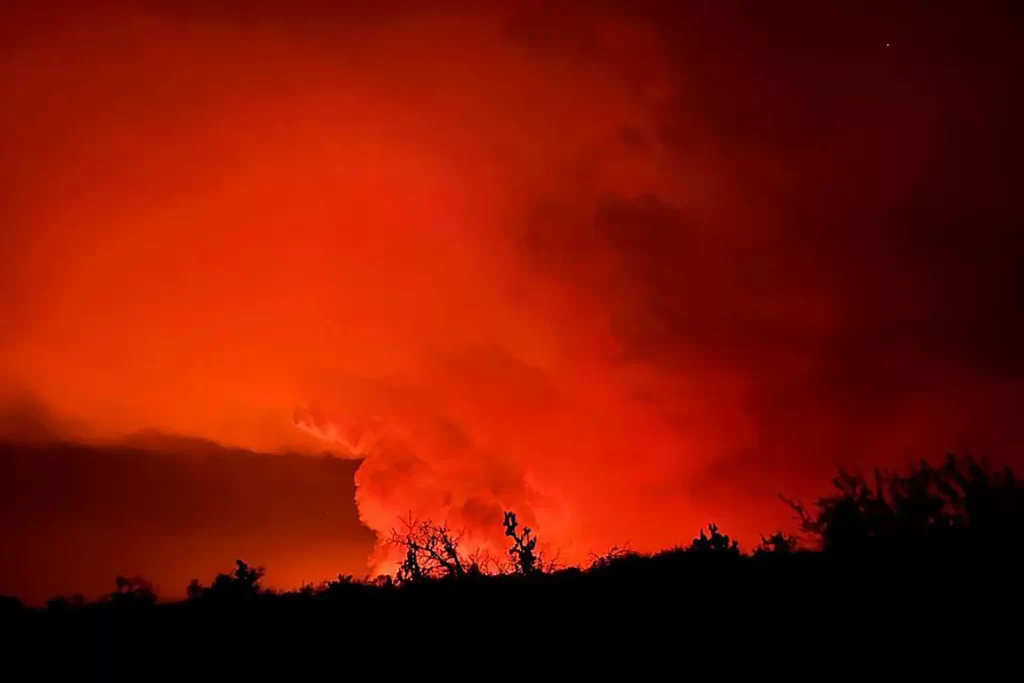
On March 3, two years later, Jorge, who was on a conservation mission at Wolf Volcano during that time, witnessed another natural phenomenon: the eruption on Fernandina island, the youngest of the archipelago, La Cumbre Volcano. Jorge was able to watch the neighboring island come alive with explosions and columns of gas, ash, and other materials.

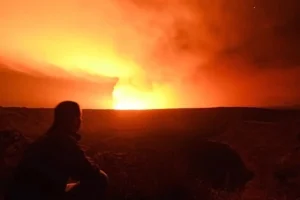
These experiences were more than just observing nature. These experiences serve as powerful reminders about the importance of conservation, especially in a fragile and dynamic environment like Galapagos. Jorge is the leader of the conservation team and he embodies all the passion and dedication needed to protect the unique ecosystems found in the dynamic and fragile Galapagos environment.
Conservation of life at the Edge: The Role of Scientific Research and Environmental Education
While the current eruption of La Cumbre Volcano does not pose a major immediate threat to any Galapagos Wildlife, it serves as a reminder of the constant volcano activity that has shaped this islands over millions and years, still can sometimes threaten species.
Our staff, such as Jorge, have the opportunity to learn about geological processes in these volcanic environments and their impacts on the environment. They can also educate the public regarding the importance of risk management and conservation for the fragile biodiversity of Galapagos.
We are proud of our leaders at Galapagos Conservation, like Jorge Carrion. His passion and dedication in helping to save the archipelago’s incredible biodiversity has also allowed him to witness first-hand the powerful and vast forces of vulcanism, which shape the fate of so many species on these islands.
